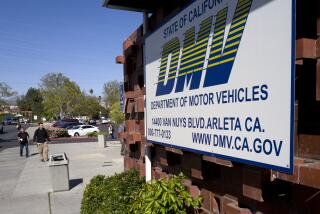Life With Checkpoints
- Share via
Law-enforcement officers can pursue drunk drivers with new assurance of court support in this holiday season, and that is a good and important development.
The U.S. Supreme Court refused earlier this month to hear appeals from a lower court’s decision upholding a drunk-driving conviction based on a breath test. The conviction had been challenged on the ground that the motorist was not permitted access to an attorney before the test was conducted. We think that the high court was justified in supporting this limitation of the right to counsel.
There remains to be settled a court challenge to roadblocks used selectively in some states, including California, to check the sobriety of motorists. These have proved a useful tool. The checkpoints do not in themselves turn up a large number of drunk drivers. Only about one in every 150 motorists stopped at three checkpoints in Los Angeles County early this month was arrested. But knowledge of the existence of checkpoints serves as a deterrent to those tempted to drink and drive.
That may have been a factor in the relatively low death toll on the state’s highways during the 30-hour Christmas period. There was only one fatality in Los Angeles County; the statewide toll was 13.
The risk is terrifying--particularly among drivers 15 to 24 years old, who are involved in two-thirds of all accidents in which a driver is drunk. There remains considerable ignorance about how much or how little alcohol renders a driver incompetent. Four or five beers--or small glasses of wine, or small jiggers of vodka or whiskey--consumed in a two-hour period are enough to carry most drivers beyond the legal limit. And the capacity to drive properly is often curtailed with the consumption of much less.
California Highway Patrol officers have shown, happily, an uncanny skill in spotting drunk drivers. Once stopped, a suspected motorist is checked for evidence of alcohol on the breath, slurred speech, runny and reddened eyes. If those signs are suspicious, the motorist is given a field sobriety test of judgment and coordination. Only if the suspect fails that test is he or she arrested and given the choice of a blood, urine or breath test.
Now the Supreme Court, in supporting the tests, has strengthened an effective tool with which the police can protect the community from these people. There is no right to drive while under the influence of alcohol.
More to Read
Sign up for Essential California
The most important California stories and recommendations in your inbox every morning.
You may occasionally receive promotional content from the Los Angeles Times.










